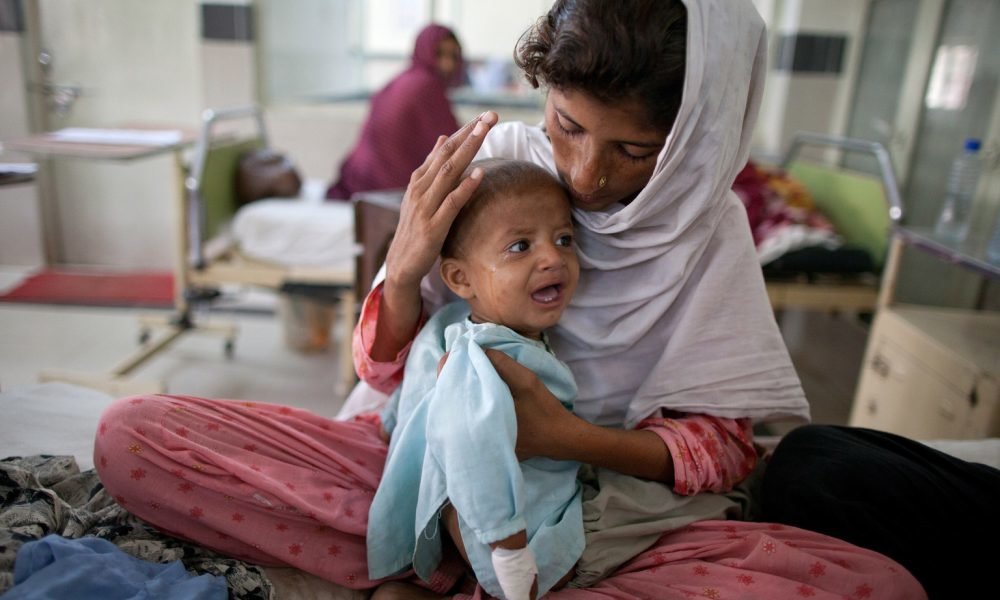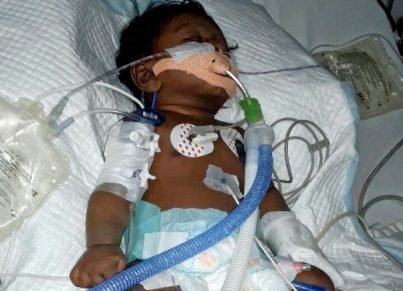
The Top Causes of Child Mortality

The leading causes of death among children in the world are diarrhea and pneumonia. They are minor illnesses in countries with high income. These diseases have very different symptoms and causes, but they have the same risk factors that include a deficiency in zinc, under-nutrition, and sub-optimal breastfeeding.
According to the World Health Organization (WHO), every year, there are 9.2 million children who die before the age of five due to the diseases that could have been prevented and treated with simple medical interventions. The majority of these deaths occur in South Asia and Sub-Saharan Africa. Here, the child mortality rate is 175 for every 1000 kids.
Most diseases that kill children under five years old are caused by lack of access to medical facilities, contaminated water, low levels of information and education, and improper sanitation and hygiene.
 Pneumonia
Pneumonia
 Pneumonia kills over 900,000 children under the age of 5 and contributes 15% of the child mortality rate. It occurs when the air sacs in the lungs and the alveoli are filled with fluid and pus. This causes breathing difficulties, resulting in oxygen deficiency. People who are malnourished have weak immune system and are at a great risk of dying from pneumonia. It can also likely affect those who have pre-existing illnesses such as HIV.
Pneumonia kills over 900,000 children under the age of 5 and contributes 15% of the child mortality rate. It occurs when the air sacs in the lungs and the alveoli are filled with fluid and pus. This causes breathing difficulties, resulting in oxygen deficiency. People who are malnourished have weak immune system and are at a great risk of dying from pneumonia. It can also likely affect those who have pre-existing illnesses such as HIV.
Furthermore, those who live in an area where indoor air pollution is high due to cooking biomass fuels, people who live with smokers, and those who live in crowded homes are also at a high risk. Pneumonia can be treated with antibiotics. However, only 1/3 of the children that suffer from this disease get the antibiotics necessary to treat them.
 Diarrhea
Diarrhea
This disease is caused by drinking dirty water, personal contact with an infected person, poor hygiene, and consuming contaminated food. It kills 760,000 children under the age of five annually. Children that are malnourished are more likely to suffer from this. Diarrhea leads to malnourishment, and those who have had the disease may have it again. It leads to severe dehydration, resulting in death. Diarrhea can be treated with rehydration zinc supplements. To prevent diarrhea, it would be a good idea to decrease the levels of malnutrition, thus make children less likely to be infected with the disease.
 Malaria
Malaria

Malaria is caused by parasites. It kills a child every minute in Africa. The parasites that cause it are transmitted to people through mosquito bites. The symptoms of the disease include fever, chills, and vomiting. These progress to a severe illness, leading to death if not treated within the next 24 hours. Malaria can be prevented by using mosquito nets. Since the year 2000, malaria-related cases of mortality in Africa have fallen by 54 percent.
Other causes of child mortality are complications related to pre-term birth, infections, and birth asphyxia or suffocation. One way to decrease deaths in children is to decrease maternal death. This can be possible with the increased access to medical facilities and regular prenatal visits. Child mortality rates are on the decline due to the efforts dedicated to making facilities better. Nonetheless, there is still a lot of work to be done.
Other causes of death by age group include developmental and genetic conditions from the birth of the child and premature birth, which causes complication to the health of the baby. Premature birth often results from the lack of prenatal check-up. When a pregnant mother is unable to receive prenatal care, there is the risk of not knowing the wellness of the fetus in the womb.
Complications may arise when the baby is being born. Most of these complications are diagnosed due to the signs and symptoms being assessed at birth. While some birth anomalies cannot be prevented, other problems may be diagnosed, prevented or treated during pregnancy or even after birth.
Prenatal TESTS
Some tests can be done before or during the pregnancy. These include Amniocentesis, Chorionic villus sampling, Genetic screening for parents, Fetal ultrasound, and Medical histories and childbirth history of the parents.
More in Motivation
-
`
How to Spot Lung Problems Early and Protect Your Health
Lung problems can sneak up on anyone, affecting breathing and overall well-being. Recognizing early symptoms can be crucial in preventing severe...
October 2, 2024 -
`
How to Get Into ‘Breaking Shape’ | A Guide for First-Timers
Breaking is not just a dance style. It is a full-body workout. To get into breaking shape, you will need more...
September 27, 2024 -
`
What to Do If You Mess Up Your Diet: A Recovery Guide
Everyone makes mistakes when it comes to diet. It’s natural to wonder what to do if you mess up your diet,...
September 19, 2024 -
`
Did Charles and Alyssa Break Up? The Signs That Have Fans Concerned
Did Charles and Alyssa break up? This question has taken over social media, sparking a wave of concern among the couple’s...
September 11, 2024 -
`
5 Essential Health Activities You Should Keep Track of Every Day
What should you track every day for health? Well, to maintain your well-being it is crucial to keep track of everyday...
September 6, 2024 -
`
Can You Work Out After Getting Blood Drawn?
A blood draw is a common procedure in healthcare, often used to monitor health or screen for various conditions. While it’s...
August 30, 2024 -
`
Does Mushroom Coffee Help You Lose Weight – Or Is It Just Hype?
Mushroom coffee has quickly become a buzzword in the wellness world, with enthusiasts praising its unique flavor and supposed health benefits,...
August 23, 2024 -
`
Looking to Work Out After Getting Tattooed? Here’s What You Should Know
Getting a new tattoo is exciting. But if you are a fitness enthusiast, you might be wondering, how long after a...
August 16, 2024 -
`
How to Lose Weight and Maintain Muscle
When aiming to shed excess fat while preserving muscle, it’s essential to strike a balance between cutting calories and sustaining physical...
August 8, 2024















You must be logged in to post a comment Login